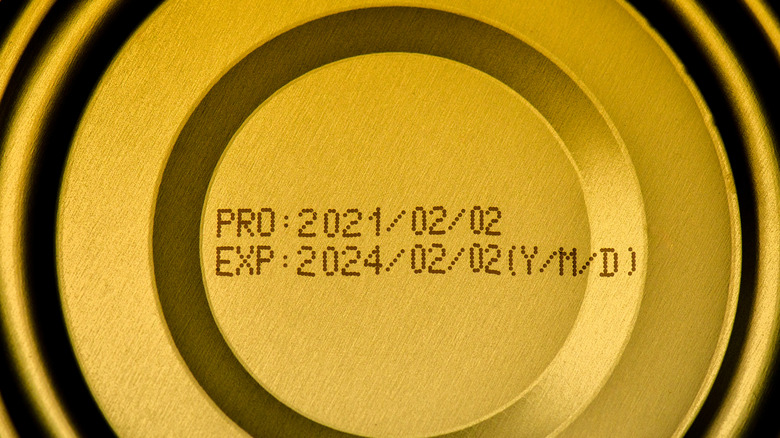Who Decides On A Food's Expiration Date Anyway?
Have you ever looked at an expiration date and wondered who gets to decide when your favorite foods are no longer good? Contrary to popular belief, expiration dates aren't universally regulated by the government. Instead, they're determined by food manufacturers themselves. According to the FDA, these dates are based on a range of factors, including how long and at what temperature a product is stored, its ingredients, and the type of packaging it comes in.
The goal isn't necessarily about safety but rather ensuring the food is consumed at its peak quality. So, while an expiration date might guide you on when your yogurt is best enjoyed, it doesn't necessarily mean it's unsafe the day after.
Whether or not you should adhere to the expiration date on a food item is a hot topic for debate. Some people are ready to toss it when the clock strikes midnight on the day of expiration, and others decide it's good until the smell test says it isn't. Here's a quick breakdown of how these dates are determined and why they often create more confusion than clarity.
The science behind the stamp
Food manufacturers don't slap random dates on their products — they rely on a combination of testing and expertise. Shelf-life studies play a critical role. This is where products are tested under lab conditions to monitor how they hold up over time.
Factors like temperature, humidity, and light exposure are taken into account, as these can significantly impact freshness. For instance, milk is highly perishable, so it gets a shorter "sell-by" date, while shelf-stable items like crackers or canned goods have much longer timeframes.
Packaging also influences expiration dates. Vacuum-sealed or nitrogen-flushed packaging extends shelf life by keeping out oxygen, as oxygen can cause spoilage. Manufacturers analyze all these variables to estimate when their products will taste and look their best. However, these dates are subjective — they're more about maintaining brand reputation than guaranteeing safety. That's why it's always good to use your senses. A carton of milk past its date but still smelling fresh is likely fine, while a product that looks or smells off should be tossed, even if it's not expired.
Expiration dates: Reliable or just guesswork?
While expiration dates aim to guide consumers, they often lead to food waste. Many people mistake these dates for hard safety deadlines, but they're typically about quality rather than whether the food will make you sick. For example, products like dried pasta or cereals can still be safe long after their expiration dates, even if they lose some flavor or texture.
The inconsistency of labeling adds to the confusion. Terms like "sell-by," "best-by," and "use-by" all mean slightly different things. A "best-by" date suggests when the product is at its peak quality, while a "use-by" date is often more critical for perishable items. Manufacturers, not regulators, choose these labels, considering factors like distribution time and storage conditions. However, without standardized definitions, food can be thrown away before even being sold and consumers are often left guessing.
Understanding how expiration dates are determined can help reduce food waste and save money. Trusting your senses — checking for changes in smell, texture, or appearance — can be a more reliable guide than blindly following the date on the package. Next time you see an expiration date, remember: it's more about taste than safety.


